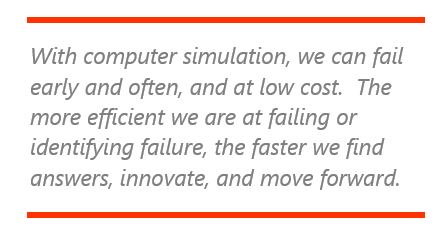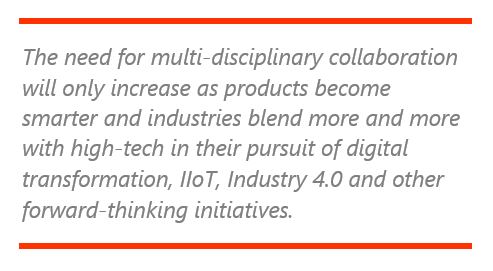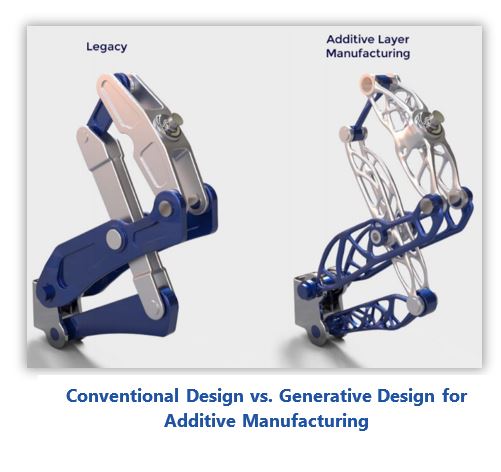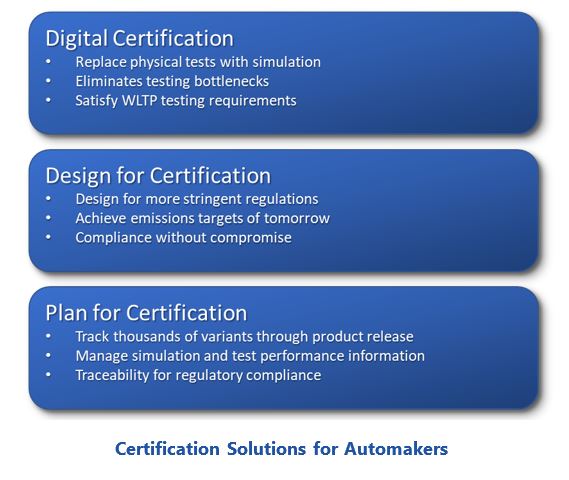

Failure, though sometimes discouraging, is a necessary part of the learning process. Henry Ford said, “Failure is simply the opportunity to begin again, this time more intelligently.” This is a strong endorsement from an era of engineering when failure meant something had to be built and broken; to fail in any capacity was time-consuming and ex-pensive. With computer simulation, however, we can fail early and often, and at low cost. The more efficient we are at failing or identifying failure, the faster we find answers, innovate, and 
Dassault Systèmes, a product lifecycle management (PLM) market leader, recently hosted its annual SIMULIA Analyst Day at its Boston Campus with the theme, “leadership in simulation.” The SIMULIA brand represents Dassault Systèmes’ simulation products for finite element analysis, electromagnetic simulation, computational fluid dynamics, and topology optimization, among others. Rather than focus on these tools individually, the content of the presentations focused on the real industry problems Dassault Systèmes customers are solving with SIMULIA applications that often require a mix of multi-scale, multi-physics, and multi-domain simulation capabilities. Although the topics were wide-ranging, two main points appeared to resonate throughout the day:
If you attended Hannover Messe in April, you likely noticed that 5G was one of the trending topics this year. 
In the high-tech industry, for example, where 5G may have the biggest initial impact, smartphone designers require a wide variety of simulation tools. Electromagnetic simulation is necessary to ensure proper antenna functionality, bio-thermal simulation is needed for human safety compliance, and due to the sensitive nature of next-generation mm-wave 5G antennas, even structural analysis must be incorporated to ensure shifts in antenna placement due to drops or bumps won’t adversely affect reception. Similarly, in manufacturing, ultra-reliable, low-latency communication also requires careful consideration of antenna position. For a connected robotic assembly line, this means that each antenna must have adequate reception regardless of the position 
Regardless of the industry, the development of 5G for real-world applications requires co-design to meet complex multi-disciplinary requirements, which in turn can only be achieved with a comprehensive suite of simulation tools. This need for multi-disciplinary collaboration will only increase as products become smarter and industries blend more and more with high-tech in their pursuit of digital transformation, IIoT, Industry 4.0 and other forward-thinking initiatives.
Before computer simulation, most design testing required a part to first be manufactured, then destroyed. With the advent of computer-aided engineering (CAE), engineers could design a part and test it using simulation before manufacturing. The next step in this progression is generative design in which the design process is automated and simulation performed concurrently. (Dassault Systèmes refers to as “Cognitive 
With generative design, an engineer will input constraints including build envelope and weight targets, loading conditions, and material properties via an automated, iterative simulation to create a suitable geometry that meets functional requirements. This is particularly powerful for additive manufacturing applications where the design freedom afforded by the manufacturing process renders conventional methods insufficient.
Dassault Systèmes has extended its generative design capability to also account for the constraints of other standard manufacturing methods, such as milling, casting, and forging. This enables its customers to perform more insightful design and manufacturing tradeoff studies. To further it’s additive manufacturing offering, Dassault Systèmes has also developed, among other things, a simulation tool that predicts shape distortions that would otherwise occur during the manufacturing process and adjusts the model geometry to compensate appropriately. The growing capabilities of generative design signify a considerable transition in how product design is accomplished: Dassault Systèmes is enabling computer-aided design by engineers to become Cognitive Augmented Design by computers.
While generative design can be considered an evolution of the conventional use of simulation, digital certification is an entirely different value proposition. Where allowed by regulatory bodies, companies now use advanced simulation to certify compliance in lieu of standard lab testing. The heavy truck industry is a perfect example of this trend. Regulations in the US stipulate that each tractor unit sold must meet specific standards. However, due to the vast number of custom configurations and the limited number of sufficiently 
Countries around the world may soon employ a similar approach to automobile regulations with the introduction of the Worldwide Harmonized Light Vehicle Test Procedure (WLTP) standard. The WLTP is a set of automotive testing standards created to align regulatory test conditions with real-world driving conditions. The standard also requires a greater number of tests and vehicle variants to be certified. Regulators have shown they are willing to address this issue using digital certifications for specific tests. As a response, SIMULIA, in conjunction with the other Dassault Systèmes brands, is creating a solution set for automakers to meet the stricter WLTP certification process. The solution consists of three elements: plan for certification, design for certification, and digital certification.
As products become more complex, the role of simulation will become more vital to their development. At the same time, the scope of simulation will expand beyond testing for failure modes to include validating for compliance. These changes will require companies across industries to invest in multi-scale, multi-physics, and multi-domain simulation capabilities as well as focus on more effective and efficient implementation and coordination of simulation tools, models and data. For the SIMULIA brand to maintain its position as a market leader it must continue to increase the breadth and depth of its portfolio while also preserving Dassault Systèmes’ cross-brand collaboration capabilities.
ARC Advisory Group clients can view the complete report at ARC Client Portal
If you would like to buy this report or obtain information about how to become a client, please Contact Us
Keywords: Simulation, 5G, Generative Design, Digital Certification, ARC Advisory Group.

